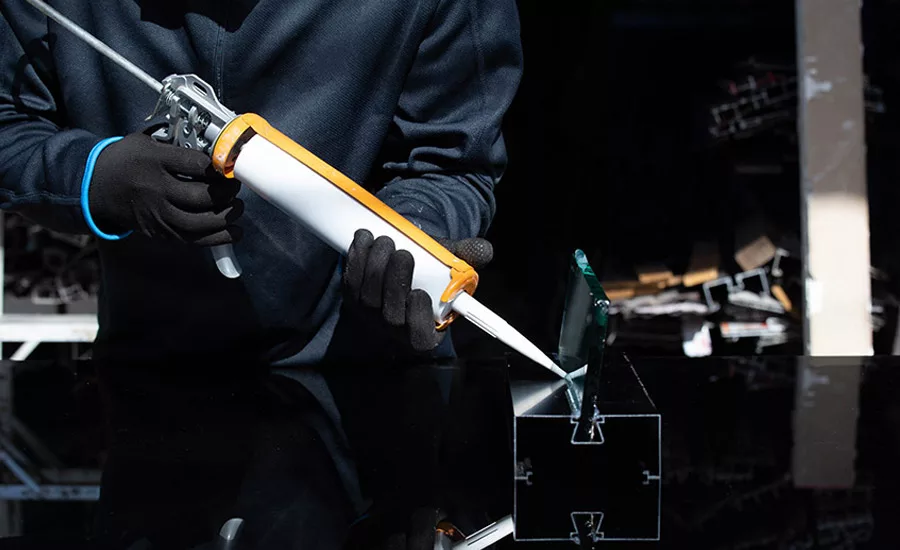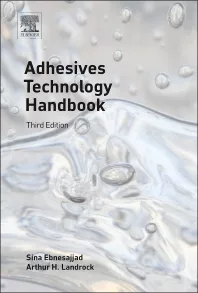Selecting the Best Packaging for Your Adhesive or Sealant
Packaging of adhesives and sealants can take many forms, and the best packaging for a product depends on a number of factors, such as dispending specifications, application environment, and cost.

iStock / Getty Images Plus via Getty Images
Packaging of adhesives and sealants can take many forms. The best packaging for a product depends on a number of factors, including: application needs, such as typical application quantity and application environment; shelf-life requirements; and characteristics of the product, such as one-component and two-component formulations. Packaging for adhesives and sealants is also designed for optimal convenience and ease of use, in addition to ensuring product integrity.
Cartridges
A popular packaging option, cartridges can be used for single- or multiple-component adhesives and sealants. An efficient and low-cost dispensing method, cartridges can help manufacturers minimize waste and provide an easy way for users to apply products. Cartridges are available in multiple sizes and can be used with mixing nozzles to provide the proper mix ratio and thorough mixing of two-part formulations. Cartridges have the option of being designed for either pneumatic and manual dispensing. Accessories to enhance the dispensing capabilities of cartridges include caps, nozzles, and plungers.
Pails and Drums
Adhesives are also packaged in a variety of pails and drums. These options can be used for bulk packaging and direct-to-consumer packaging as well. Metal packaging is one of the preferred options for hazardous chemicals, which is one reason that metal pails are a preferred option for the packaging of adhesives and sealants. Offering a variety of sizes and configurations, metal packaging can often have recyclability advantages. High-density polyethylene containers are another popular option for adhesive packaging. These can include vapor-lock containers, plastic tubs, and plastic pails and buckets. Rugged and stackable, these containers can be used with any adhesive formulation that is chemically compatible.
Sausage Packages
As its name suggests, sausage packaging for adhesives and sealants involves a flat film that is filled like a sausage and clipped to keep the product inside. Advantages of this type of packaging includes lower costs compared to more conventional cartridges, increased shelf life, storage and shipping space savings, reduced shipping costs, and multiple size options. Because the packaging can be completely compressed when dispensing, there is less waste of product compared to adhesives stored in pails and similar containers. For companies looking to increase their sustainability profile, sausage packaging presents a good option, including lowering the CO2 footprint of shipping and reducing waste and increasing recyclability.
Flexible Packaging
Another option for the packaging and transporting of adhesive and sealant products is flexible packaging. Flexible packaging includes: inserts for pails and drums, and liners for intermediate bulk containers, pails, and drums. Using flexible packaging with drums and pails can help with residue control, as the packaging keeps drums and pails clean and contributes to their reuse. They also help reduce waste, as they keep products from being contaminated by the containers they are stored in. This packaging option can also reduce shipping weight, as they are lighter weight than other materials, and their various sizes can increase transportation efficiency as well as reduce warehouse space. Sizes of flexible packages for adhesives and sealants can range from five gallons to up to 300 gallons. The shape of liners can also vary; they include pillow shaped, cube shaped, flat-seam shaped, and round-bottom shaped. Additionally, the heat-sealed liners can be manufactured with different wall thicknesses to accommodate different requirements for weight, moisture protection, and chemical resistance.
Syringes
Syringes are commonly used to dispense adhesives in a precise and controlled manner. The adhesive is loaded into the syringe barrel, which is then fitted with a plunger or piston that fits into the barrel or rounded tube. Syringes can be used for one-component and two-component formulations and can be dispensed using a manual or pneumatic applicator. Additionally, syringes can be combined with specially designed static mixer nozzles to obtain optimal mixing of the adhesive or sealant formulation.
Pouches
Pouches are manufactured using laminate film or foil. They are applicable for solvent- and moisture-sensitive materials and can be used for one- and two-component formulations. Flexible divider pouches can be used for epoxy, urethane, and silicone reactive systems, among others. For two-component reactive formulations, designs can include flexible burst seal pouches and flexible divider clip pouches. These can contain pre-measured amounts of unmixed resins and catalyst.
Tubes
When considering the type of packaging for an adhesive or sealant, especially in a direct-to-consumer application, the typical application quantity should be considered. An example of this would be cyanoacrylate adhesives that use a small amount of product for typical consumer applications. Adhesives that are sensitive to atmospheric conditions are also good candidates for tube packaging. For example, aluminum tubes are often used for products that are sensitive to moisture.
As adhesive and sealant manufacturers consider what packaging to use for their products, they need to assess factors that include cost, dispensing specifications, variables in application environment, typical application quantity, formulating requirements, and ease of disposal/recyclabilityLooking for a reprint of this article?
From high-res PDFs to custom plaques, order your copy today!





